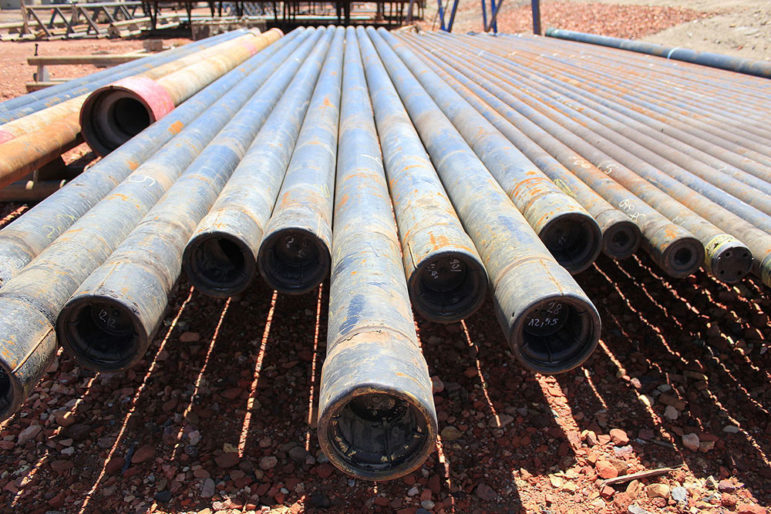
More than 1280 archaeologists, anthropologists, historians, and museum workers committed to responsible stewardship sent a letter to the Obama administration last week, asking for further study of the land involved in the Dakota Access Pipeline construction.
“We are invested in the preservation and interpretation of archaeological and cultural heritage for the common good,” they declared. “We join the Standing Rock Sioux Tribe in denouncing the recent destruction of ancient burial sites, places of prayer and other significant cultural artifacts sacred to the Lakota and Dakota people.”
The letter reads, in part:
Former tribal historic preservation officer Tim Mentz called the discovery of the site “one of the most significant archeological finds in North Dakota in many years.”
“This demolition is devastating,” Tribal Chairman David Archambault II said. “These grounds are the resting places of our ancestors. The ancient cairns and stone prayer rings there cannot be replaced. In one day, our sacred land has been turned into hollow ground.”
We are familiar with the long history of desecration of Indigenous People’s artifacts and remains worldwide. Many of us put countless hours into developing the Native American Graves Protection and Repatriation Act (NAGPRA) to prevent burial desecration of this type, yet the pipeline was approved without a full Environmental Impact Statement (EIS), and the cultural resources survey did not involve proper consultation with the Standing Rock Sioux Tribe and other tribes in the region.
The destruction of these sacred sites adds yet another injury to the Lakota, Dakota, and other Indigenous Peoples who bear the impacts of fossil fuel extraction and transportation. If constructed, this pipeline will continue to encourage oil consumption that causes climate change, all the while harming those populations who contributed little to this crisis.
Sign up for our free newsletters
Subscribe to NPQ's newsletters to have our top stories delivered directly to your inbox.
By signing up, you agree to our privacy policy and terms of use, and to receive messages from NPQ and our partners.
We call on the federal government to abide by its laws and to conduct a thorough environmental impact statement and cultural resources survey on the pipeline’s route, with proper consultation with the Standing Rock Sioux Tribe. We stand with the Standing Rock Sioux Tribe and affirm their treaty rights, tribal sovereignty, and the protection of their lands, waters, cultural and sacred sites, and we stand with all those attempting to prevent further irreparable losses.
According to the New York Times, “Opposition from academics, curators and scientists to the way the pipeline project has unfolded has been unusually vast and swift. Dr. [David Hurst Thomas, the curator of North American archaeology at the American Museum of Natural History], “I can’t recall anything like it.”
Among the many prominent signers are Richard W. Lariviere, president and chief executive of the Field Museum in Chicago, and Brenda Toineeta Pipestem, chairwoman of the board of the National Museum of the American Indian.
The 7800-strong Society for American Archaeology sent its own letter to the Corps of Engineers last week, in which Diane Gifford-Gonzalez, the Society’s president, wrote that the group had “unresolved questions” over whether the Corps had properly handled its duties under the National Historic Preservation Act. She writes that the construction may have violated a number of laws including the Archaeological Resources Protection Act.
Part of the objection to the pipeline’s construction in North Dakota was based on the potential for water pollution. Reuters reports that, according to an analysis it has done of government data, Sunoco Logistics, the future operator of the Dakota Access Pipeline, tops the list among all its competitors for crude oil spills with more than 200 leaks recorded since 2010.
Sunoco Logistics is a major pipeline operator in the United States, and when asked about its record, it acknowledged the data and told reporters that it has taken measures to reduce its spill rate. “Since the current leadership team took over in 2012, Sunoco Pipeline has enhanced and improved our integrity management program,” writes Sunoco spokesman Jeffrey Shields.
Despite (or perhaps as a result of) a recent federal court ruling sustaining the pipeline’s construction, the federal government has called a temporary halt to the Army Corps of Engineers work on the project on federal land and requested private contractors to voluntarily suspend Dakota Access work on non-federal land within 20 miles of Lake Oahe (Missouri River) to reconsider the issues in light of the protest, which has attracted support from multiple tribes from around the country, some of which have found themselves in similar positions.—Ruth McCambridge













